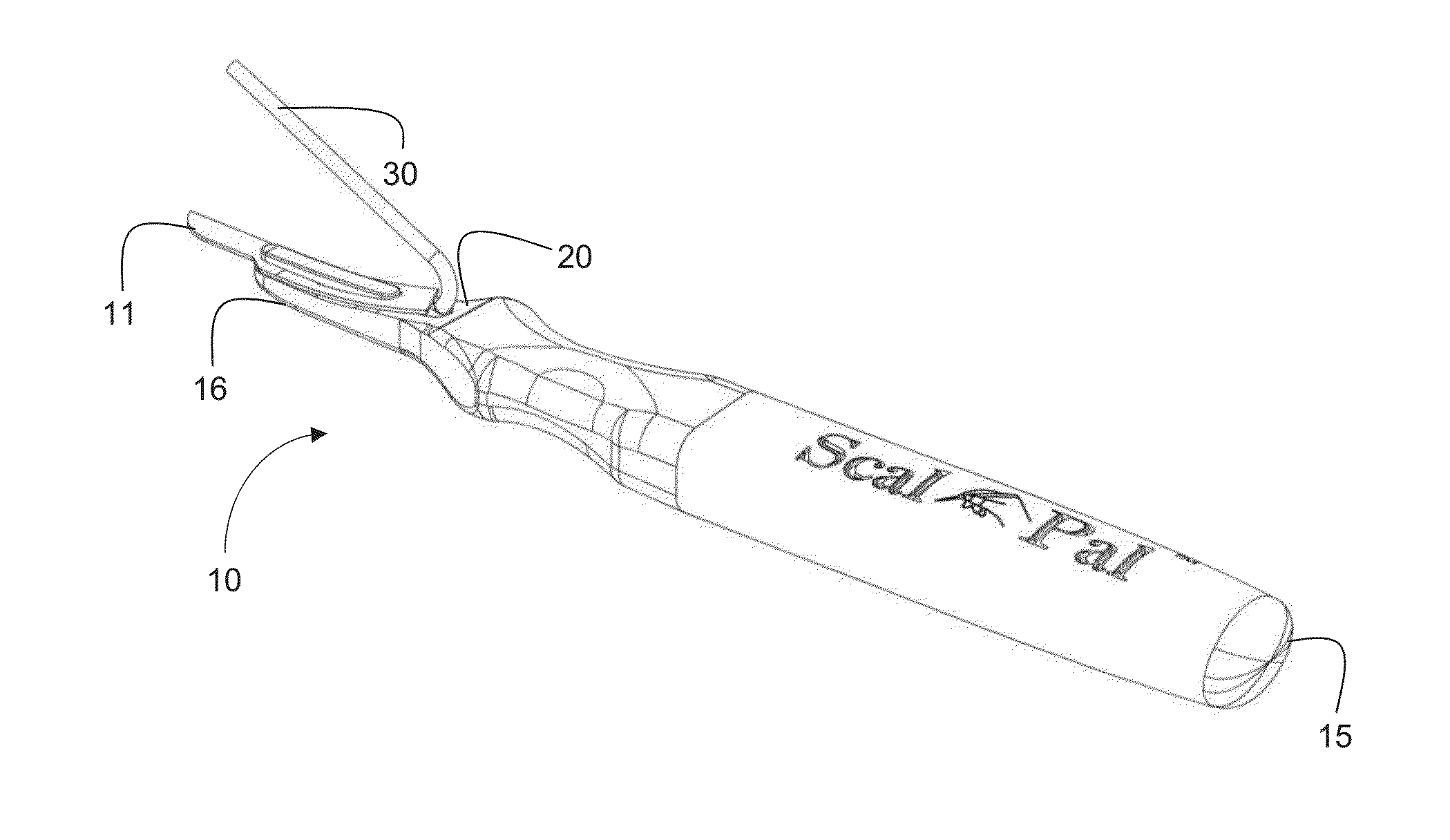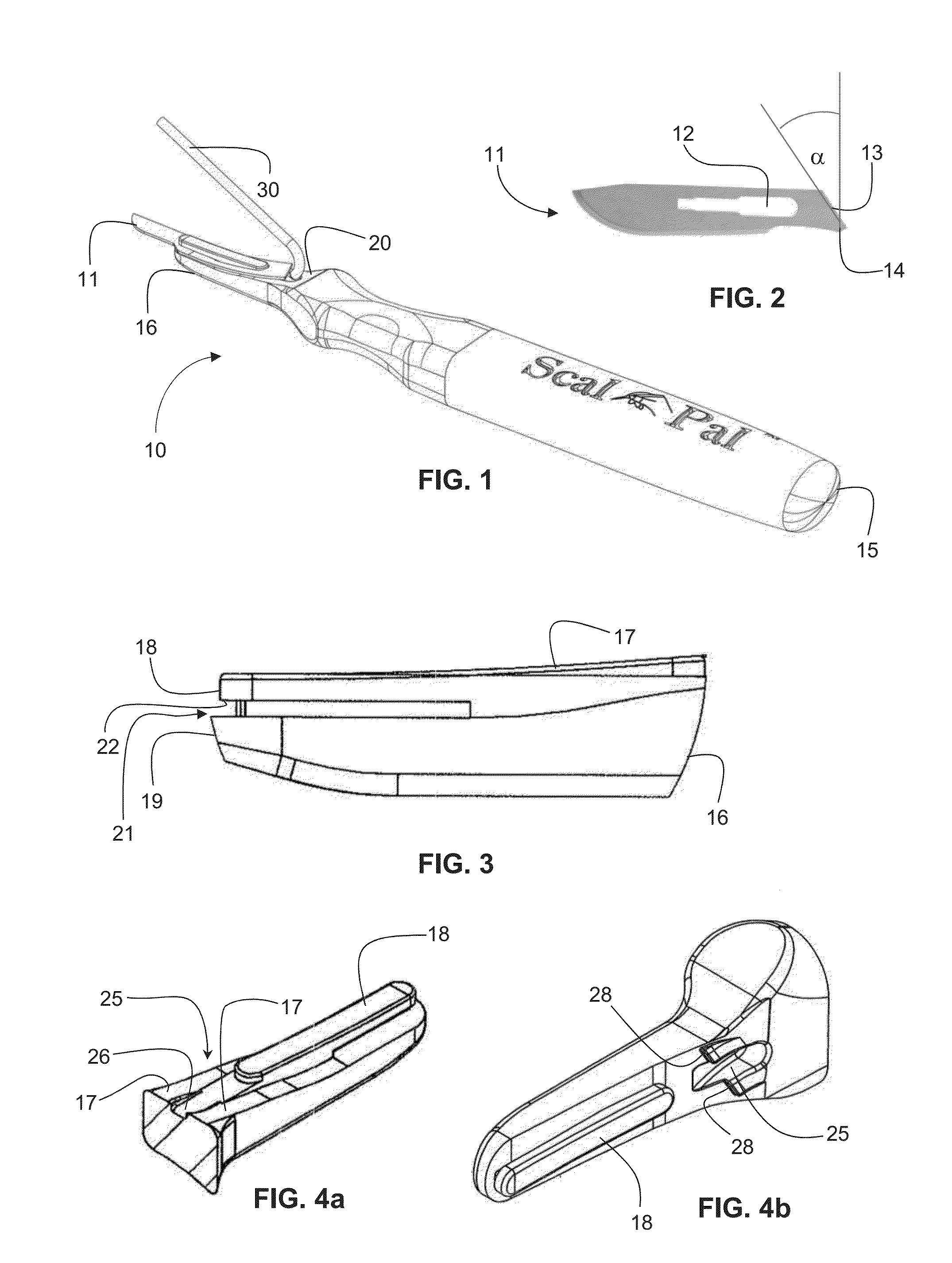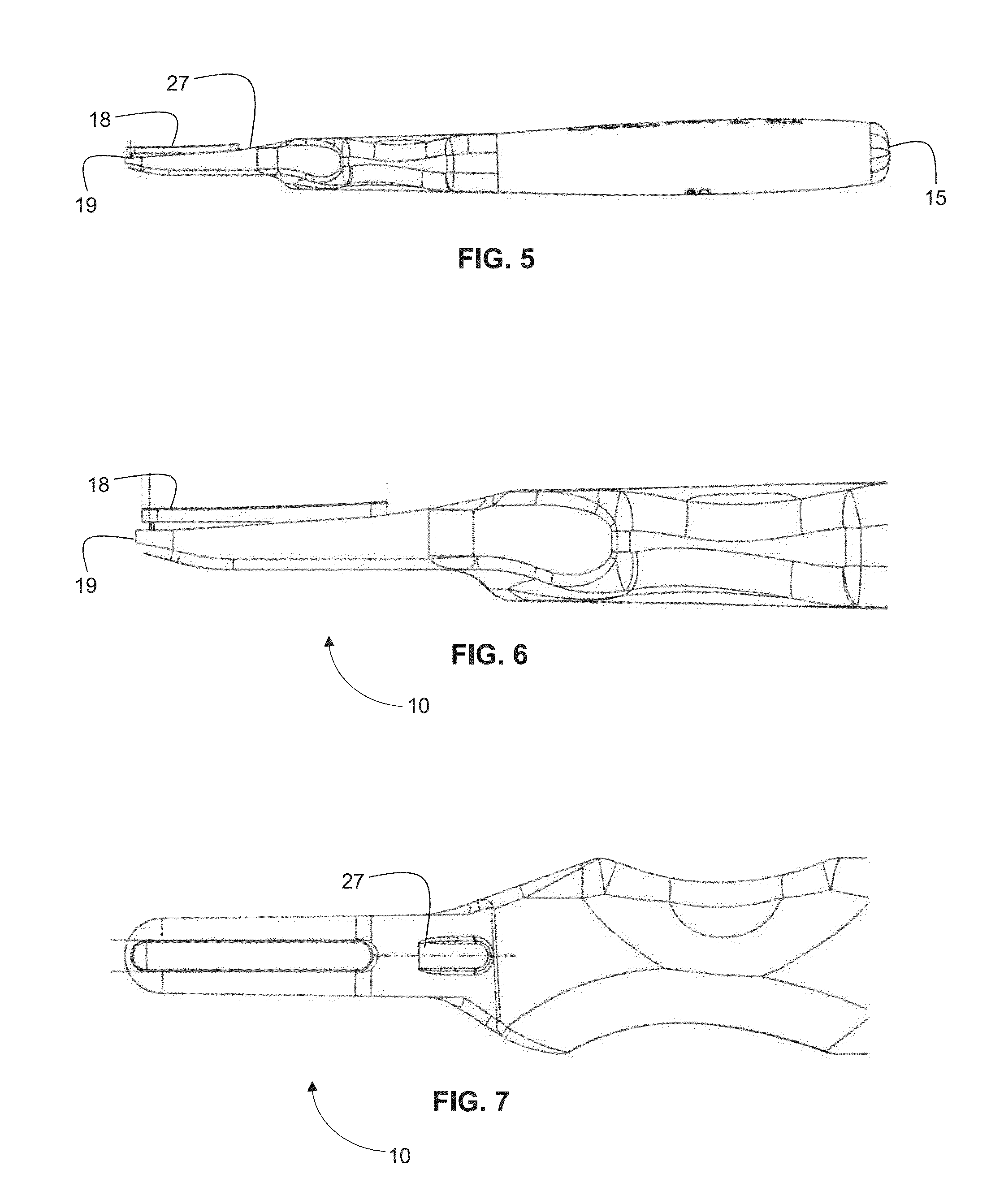Surgical knife and tools adapted for simplified blade removal
a technology of surgical blades and tools, applied in the field of surgical scalpels, can solve the problems of unstable blade support, easy sliding of the blade, and large bulky tools that allow single-handed operation, and achieve the effect of facilitating the sliding removal of the blade and flexing the blad
- Summary
- Abstract
- Description
- Claims
- Application Information
AI Technical Summary
Benefits of technology
Problems solved by technology
Method used
Image
Examples
first embodiment
[0035]FIGS. 9 and 10 are pictorial representations showing details of a blade removal tool 40 for removing a blade from the surgical scalpel 10 having an elongate channel 25 as described above with reference to FIGS. 1 to 8. The blade removal tool 40 comprises a generally closed receptacle 41 having an opening 42 to which a resilient shutter 43 is hinged at a lower edge for pivotally opening about a hinge axis shown as 44. An upper edge of the opening 42 curves inwardly, having a claw 45 that points inside the receptacle 41 towards its closed end and is dimensioned such that it is accommodated within the elongate channel 25.
[0036]Upon insertion of the scalpel 10 into the opening 42 of the blade removal tool 40, the shutter 43 is resiliently pushed inward. The scalpel 10 is inserted until the channel 25 becomes aligned with the claw 45, whereupon lifting the scalpel upward at its front tip urges the channel 25 into upward engagement with the claw 45 behind the rear edge of the blade...
second embodiment
[0038]FIGS. 11 to 14 are pictorial representations showing details of a blade removal tool 50 for removing a blade from a conventional surgical scalpel shown as 100 as described in the background. The blade removal tool 50 comprises a generally closed receptacle 51 having an opening 52 to which a resilient shutter (not shown) is hinged at a lower edge. Attached to an inner side surface of the receptacle 51 is a claw 55 that is shown enlarged in FIG. 14 where it is seen that the claw 55 is directed laterally from the inner wall of the receptacle 51 supporting the claw to the opposite wall.
[0039]In use, the scalpel 100 is inserted into the opening 52 of the blade removal tool 50 below the claw 55, whereby the shutter is resiliently pushed inward. As noted above with reference to FIG. 2, the rear edge 13 of the blade is inclined at an acute angle α the vertical, thus creating a corner 14 that overhangs the mount. The scalpel is inserted until the corner 14 engages the outwardly protru...
PUM
 Login to View More
Login to View More Abstract
Description
Claims
Application Information
 Login to View More
Login to View More - R&D
- Intellectual Property
- Life Sciences
- Materials
- Tech Scout
- Unparalleled Data Quality
- Higher Quality Content
- 60% Fewer Hallucinations
Browse by: Latest US Patents, China's latest patents, Technical Efficacy Thesaurus, Application Domain, Technology Topic, Popular Technical Reports.
© 2025 PatSnap. All rights reserved.Legal|Privacy policy|Modern Slavery Act Transparency Statement|Sitemap|About US| Contact US: help@patsnap.com



